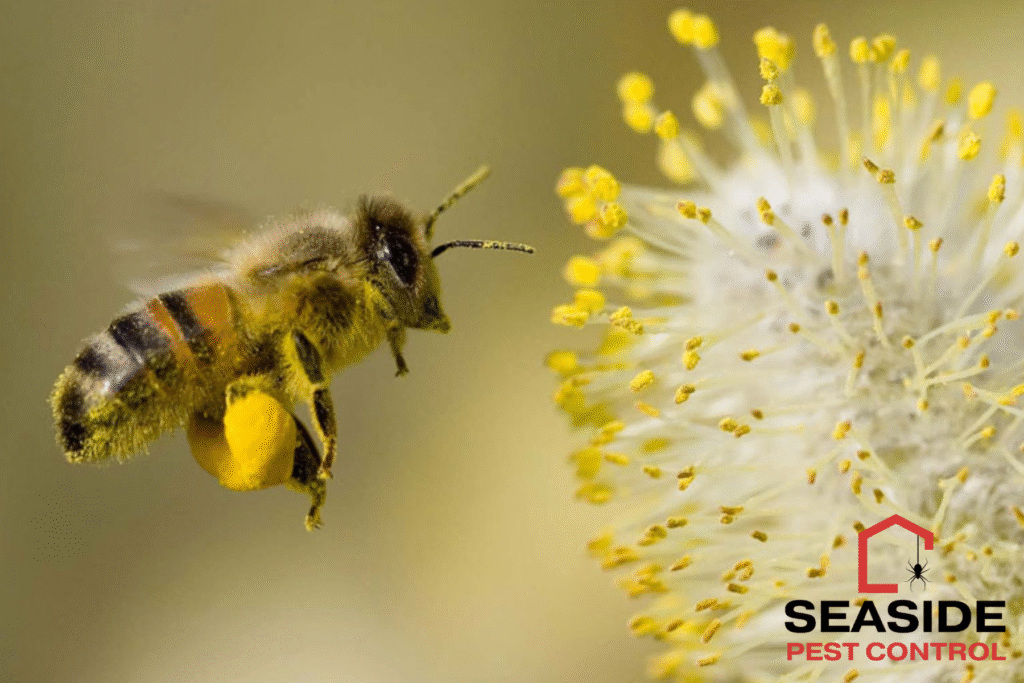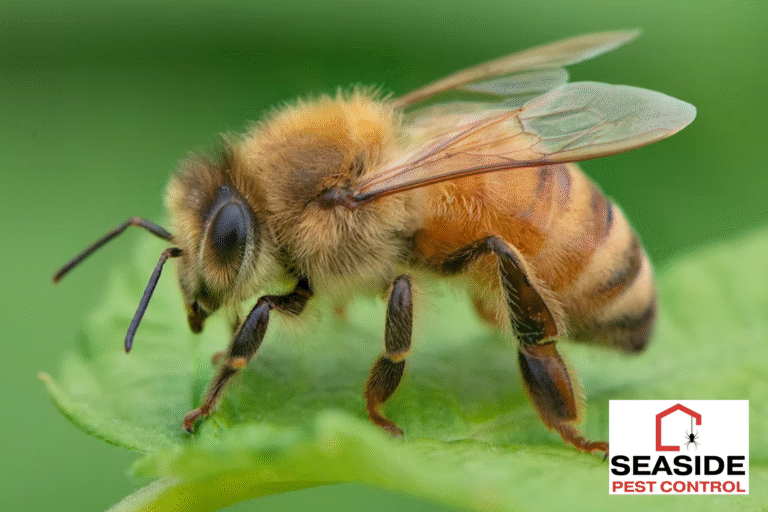Do Bees Die After They Sting?
When you encounter a bee, the first thought that may cross your mind is whether or not it will sting you. If you’re stung, you might wonder what happens to the bee afterward. Do bees die after they sting? It’s a common question, and the answer depends on the type of bee in question. In this blog post, we’ll explore the science behind bee stings and explain what happens to the bee once it stings. We’ll also take a look at the different types of bees in BC and how to manage a bee infestation.
The Stinging Mechanism of Bees
To understand whether bees die after they sting, it’s important to first look at how a bee’s stinger works. A bee’s stinger is a modified ovipositor, an organ that female bees use for laying eggs. The stinger is designed to deliver venom into the target and defend the hive from perceived threats. However, not all bees sting in the same way, and this is where the differences come into play.
Do All Bees Die After They Sting?
Do bees die after they sting? The short answer is no. Not all bees die after they sting, but many species do. For instance, honeybees are known to die after stinging because their stinger is barbed, which means it gets stuck in the skin of their target. When the bee tries to fly away after stinging, its stinger is ripped from its body, leading to its death.
However, not all bees have barbed stingers. Wasps, hornets, and other species have smooth stingers that allow them to sting multiple times without harming themselves. These bees, such as the bald-faced hornet or yellowjackets, are capable of stinging multiple times and do not die after delivering their sting. This raises the question: do all bees die after they sting? The answer is no, as many bees, like wasps and hornets, can sting repeatedly without fatal consequences.
Honeybees: The Sacrificial Defenders
Honeybees are unique among the bee species due to their barbed stinger. When a honeybee stings, the barbed end of the stinger becomes lodged in the skin of the target, often tearing the bee’s abdomen open as it attempts to fly away. As a result, honeybees typically die after stinging because their stingers are designed to stay in the wound, delivering venom and then causing fatal damage to the bee.
The sacrificial death of the honeybee serves to protect the hive by deterring predators and threatening animals. It’s a part of the honeybee’s defense mechanism, as the venom injected into the wound also causes pain and swelling, which can deter potential attackers.
Wasps and Hornets: Multiple Stings, No Death
Wasps and hornets, unlike honeybees, have smooth stingers. This allows them to sting multiple times without suffering the same fate as honeybees. These bees can deliver a painful sting repeatedly, injecting venom each time. Ground hornets, for example, are particularly aggressive and will sting multiple times when provoked, defending their nest with great tenacity.
Hornets are a type of wasp and can be particularly dangerous due to their aggressive nature. Unlike honeybees, hornets are capable of stinging multiple times and often build their nests in hidden locations, such as in trees or underground. Their nests can house hundreds or even thousands of hornets, and they will work together to defend it from threats.
Other Types of Bees
There are many types of bees in BC, and not all of them share the same characteristics as honeybees. For example, carpenter bees have smooth stingers similar to wasps and hornets, which allows them to sting multiple times. However, carpenter bees are generally not as aggressive as hornets and tend to be less of a threat to humans.
The Role of Bee Venom
Bee venom is used as a defense mechanism, but it also serves a purpose in the bee’s daily life. For instance, in some species of bees, the venom helps to immobilize prey, such as other insects, for consumption. In the case of honeybees, the venom injected during a sting causes pain and irritation, making it less likely that the stung individual will continue to attack the hive.
Why Do Bees Sting?
Bees generally sting in self-defense or to protect their hive from perceived threats. Honeybees, for instance, are known to be highly protective of their hive and will sting any intruder they perceive as a threat. Other types of bees, such as wasps and hornets, are also aggressive when defending their nests.
For honeybees, stinging is a last resort. They will not sting unless they are threatened or provoked. However, once they sting, they often die because of the barbed nature of their stinger. In contrast, wasps and hornets can sting multiple times and are much more aggressive in their defense of the nest.
How to Handle Bee Stings
If you find yourself stung by a bee, it’s important to take proper steps to manage the sting. For honeybees, their stinger will usually remain in the skin. You should remove the stinger as quickly as possible to reduce the amount of venom being injected. Use a flat object, like a credit card, to scrape the stinger away. Avoid using tweezers, as squeezing the stinger could release more venom.
For wasps and hornets, the sting may not be as serious, but it can still be painful. Apply a cold compress to the sting site to reduce swelling and pain. If you experience an allergic reaction, such as difficulty breathing or swelling of the throat, seek medical attention immediately.

Managing Bee Infestations in BC
Bees are vital to the ecosystem, as they help pollinate plants and crops. However, when bee populations invade your home or yard, it can create a safety risk. If you suspect that you have a bee infestation, it’s important to contact pest control Chilliwack professionals.
At Seaside Pest Control, we offer expert solutions for managing bee populations, including the control of hornets and other stinging insects. Our team of certified technicians is skilled in locating and removing bee nests, whether they are located in trees, under eaves, or in the ground. We specialize in handling various types of bees in BC, ensuring that your home remains safe from these potentially dangerous pests. For reliable and professional pest control services, including bee removal, contact an exterminator Chilliwack today.
Whether you’re dealing with honeybees, hornets, or other types of bees, our company provides safe, efficient pest control services to handle the situation. For a comprehensive solution to your bee problem, our pest control services in Chilliwack offer targeted treatments that protect your home while keeping the environment safe.
About Seaside Pest Control Inc.
Seaside Pest Control Inc. is a trusted pest management company that serves homes and businesses throughout British Columbia. Our certified technicians are dedicated to providing effective, environmentally safe pest control solutions for all types of pests, including bees, hornets, wasps, and more. Whether you’re dealing with a minor infestation or a more serious problem, Seaside Pest Control is here to help.



